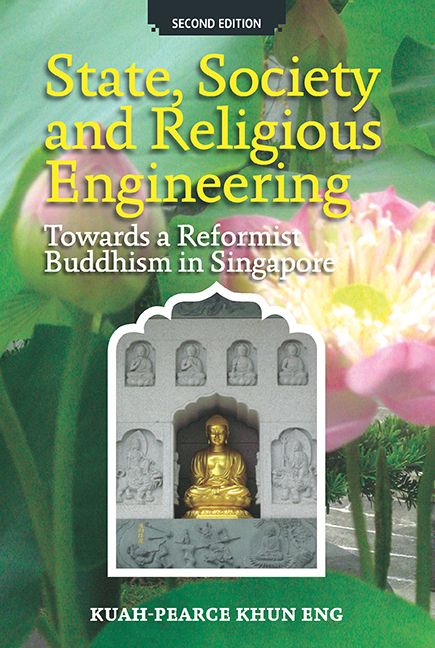Book contents
- Frontmatter
- Contents
- List of Diagrams
- Note on Romanisation
- Preface to the Second Edition
- Acknowledgements to the Second Edition
- Introduction
- PART 1 INVENTING A RELIGIOUS TRADITION
- PART 2 STATE, SOCIETY AND RELIGIOUS ENGINEERING
- PART 3 TOWARDS A REFORMIST BUDDHISM
- Conclusion
- Postscript to the Second Edition: Towards a Humanist and Socially-engaged Buddhism
- Glossary
- Bibliography
- Index
Preface to the Second Edition
Published online by Cambridge University Press: 21 October 2015
- Frontmatter
- Contents
- List of Diagrams
- Note on Romanisation
- Preface to the Second Edition
- Acknowledgements to the Second Edition
- Introduction
- PART 1 INVENTING A RELIGIOUS TRADITION
- PART 2 STATE, SOCIETY AND RELIGIOUS ENGINEERING
- PART 3 TOWARDS A REFORMIST BUDDHISM
- Conclusion
- Postscript to the Second Edition: Towards a Humanist and Socially-engaged Buddhism
- Glossary
- Bibliography
- Index
Summary
Religion, since the beginning of human civilisation, has played a crucial role in all societies. Its metaphysical appeal continues to fulfil individuals’ imagination and quest for an understanding of the unknown and the events that unfold before our eyes. Such a role has become even more significant with the dawn of the 21st century as societies have become more complicated and besieged by increasing wants both metaphysical and material in nature. As we move into the age of globalisation, fraught with relativism that challenges existing structures, institutions and ideologies, we are confronted with a multitude of behaviours and insatiable demands that expose the world as both rational and chaotic, moral and immoral, and compassionate and ruthless. Amidst these conflicting demands, individuals continue to cope with religious and spiritual imaginations.
So, where does religion stand on the global stage in the contemporary world? Since the 9/11 incident in 2001, the world has been looking at all types of religious activities, religious revivalism and religious renaissance in a cautious manner. Could religion lead to what Huntington (1996) viewed as “clashes of civilization” considered inevitable because of differing ideological underpinnings of the different religions within different socio-political cultures, or could it be as the old school of thought has argued that religion continues its journey into humanity, allowing for discursive understandings and shaping the moral underpinnings of each individual society.
While the impact of the 9/11 incident has made us re-examine religions on the global stage, cementing the link between religion and politics and religion and security issues, too much attention today has been paid to this set of relationships, often neglecting the other aspects of religion in the globalised world that we live in. The political and security issues confronting religious activities often make it to the front page of major newspapers. Attention is focussed on the Islamic extremist groups and their actions or would-be terrorist activities foiled by various governments in the world. At the same time, the violence between Buddhism and Hinduism has also made headlines in the news. Towards the end of 2007 and first half of 2008, attention was turned to Buddhism with the sudden assembly of monks in saffron robes taking to the streets in protest against authoritarian regimes with regard to religious freedom, human rights issues and political freedom in Myanmar and Tibet. Such high profile movements gained worldwide attention.
- Type
- Chapter
- Information
- State, Society and Religious EngineeringTowards a Reformist Buddhism in Singapore (Second Edition), pp. ix - xiiPublisher: ISEAS–Yusof Ishak InstitutePrint publication year: 2009

